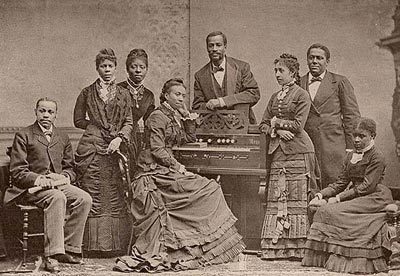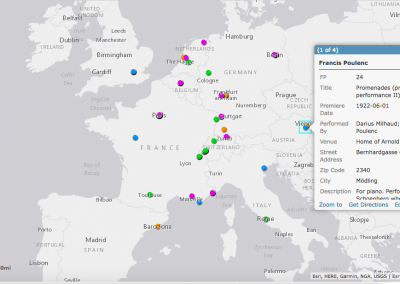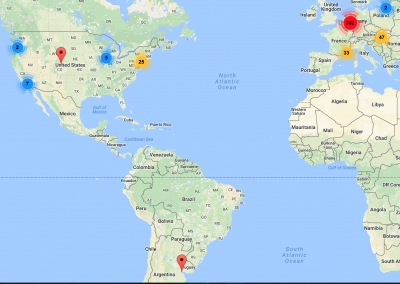Chronological Map Prototype
The ultimate pursuit of this research has been to create interactive maps capable of displaying performances, venues, residences, and other geographical information vis-à-vis 1924 Parisian musical life.
From the beginning of this project, we dreamed of producing what my student researchers have called “a Google map for music in 1924 Paris,” but with a twist. Like a Google Map, we wanted something that we could organize spatially as well as search by composer, piece title, genre, or any other meaningful parameter. Unlike a standard Google map, however, we also wanted to add a chronological dimension so that we could show developments over time.
After months of work, we’ve developed a rough prototype of a map that meets these criteria. We encourage you to experiment with the map yourself (see below for instructions).
As you can see, it’s possible to watch performances pop up over time by clicking the clock icon in the upper left corner and then clicking play. Right now it’s showing us a selection of performances taking place each week at the 10 top venues1 in Paris in May and June 1924, but eventually you’ll be able to decide for yourself whether to sift through music history by day, week month, or year.
If you “zoom out” chronologically by unclicking the clock and zoom out spatially by clicking the minus sign, you can click on a marker for a venue and see many of the performances that took place there over the course of the year by clicking the triangle at the top right. Eventually we’d like this performance information to pop up with sound clips, images, or video of the information listed. And we’ll eventually link to other materials on our website that contextualize the raw data presented here.
Another aspect of the map you can play with is its search feature. Click on the funnel icon and click on “Search by Composer,” then type in Beethoven and click “Apply” to see all a list of all the performances of Beethoven’s music in our database. By clicking on any of the search results, the map recenters on the venue where the performance took place. Eventually we’d like you to be able to search, then use the chronology feature to see where performances of Beethoven’s music pop up over time.
Finally, you can see any of these results on this stock map, which is easy to read but a little bland, or you can turn on the historical map layer by clicking on the layers button in the top right corner and checking the box next to “1924 Baedeker Map.” Baedeker was a popular travel guide; we performed a high resolution of scan of a metro map in the back of the 1924 edition and georectified it to match up with this present-day map of Paris. As you can see, it’s harder to read, but is more successful at making it seem like someone in 1924 Paris had created a Google Map of musical life.
As we continue to work on this project, we look forward to improving this map by introducing more functionality and a cleaner, more intuitive interface. In the meantime, we hope you’ll explore this and our other maps. We’re just beginning to appreciate the power of interactive digital maps to reveal new insights about music history to students, scholars, and the general public, and we’re eager for feedback. Thanks for visiting, and please be in touch!
1 These venues include the Théâtre des Champs-Elysées, Palais du Trocadéro, Salle Erard, Salle Pleyel, Salle des Agriculteurs, Théâtre de la Cigale, Théâtre du Châtelet, Opéra, Opéra-Comique, and the Salle du Vieux Conservatoire. Note that the Salle Erard appears up twice on the current map; the address in the 2nd arrondissement is the correct one.



